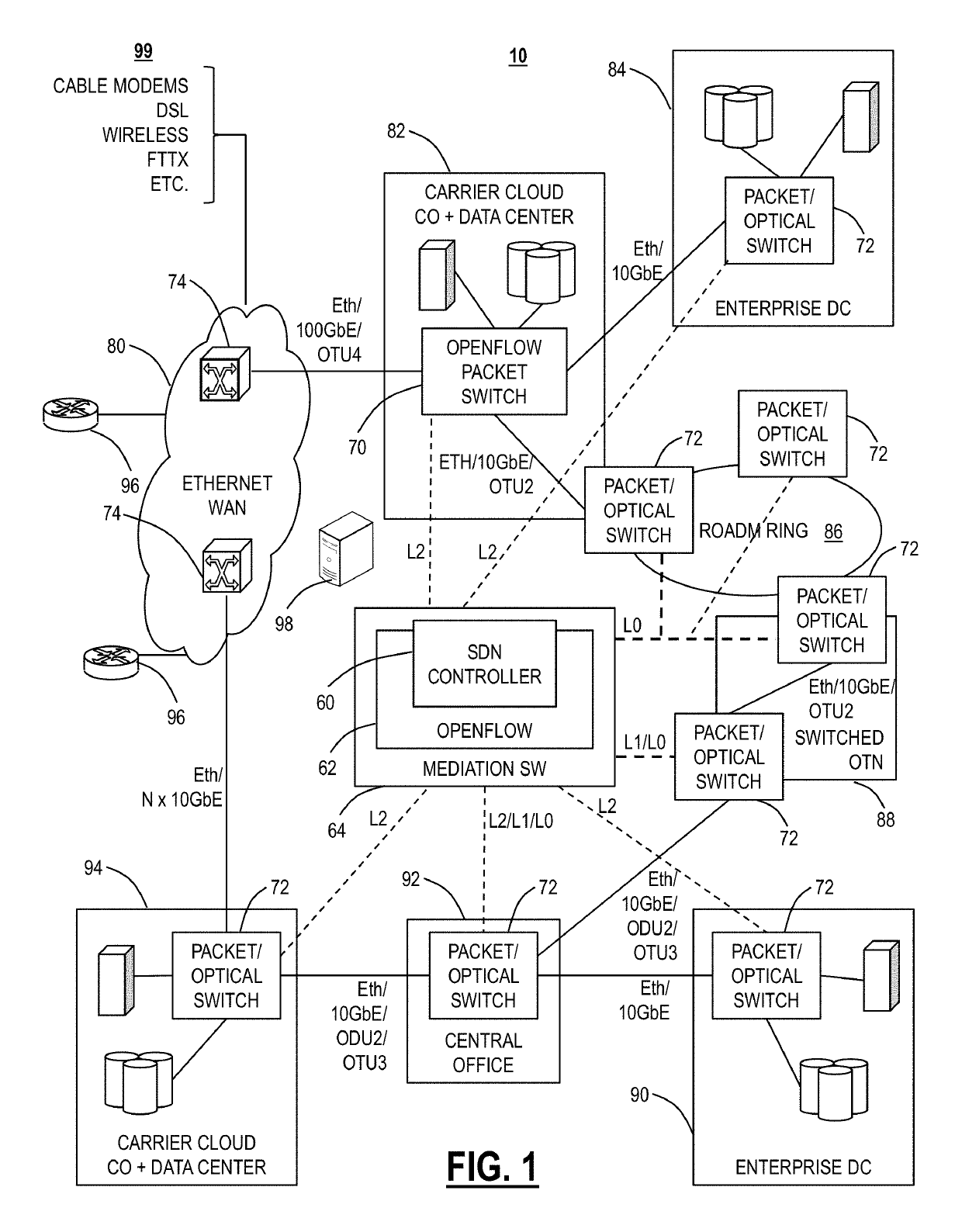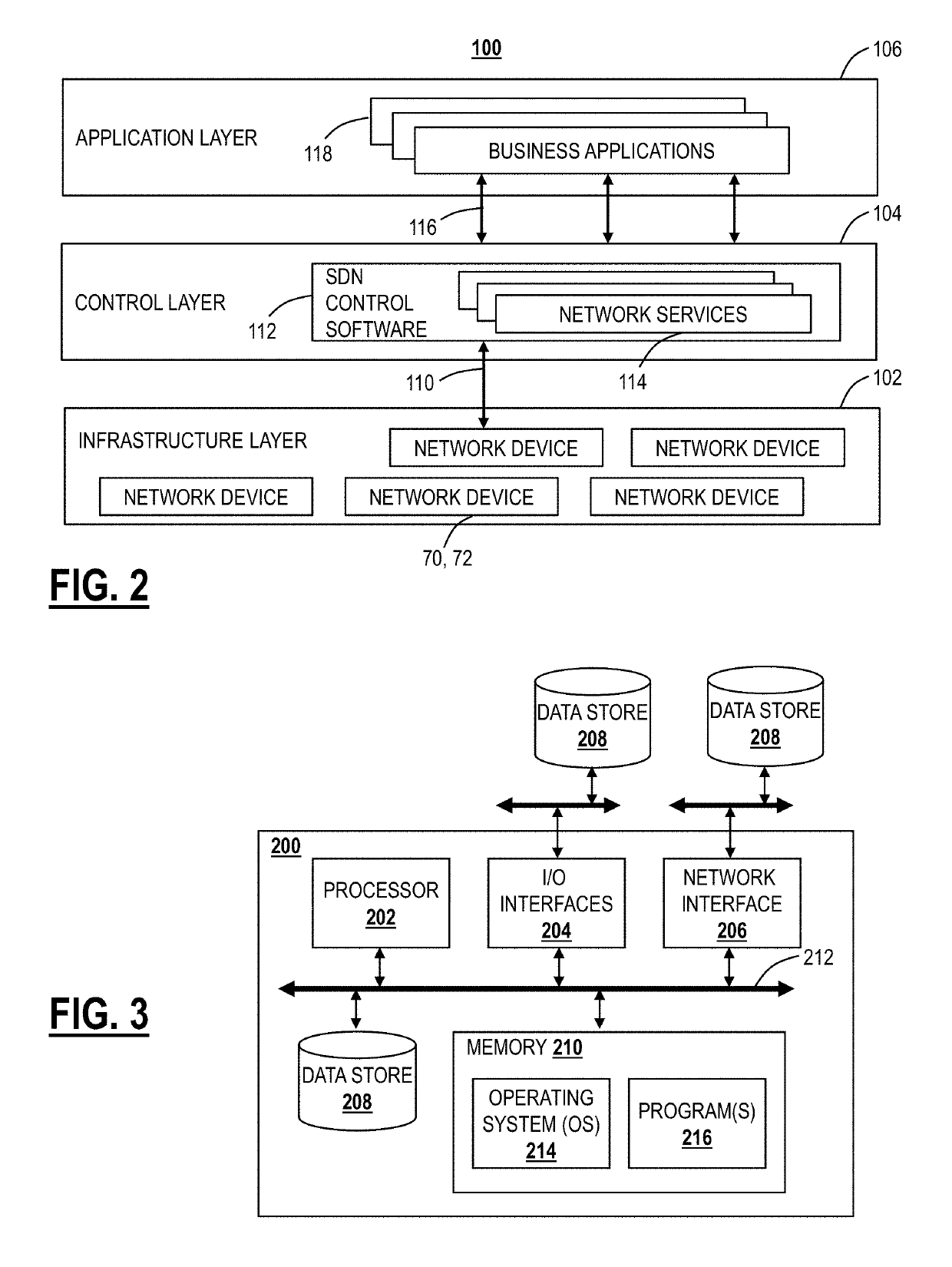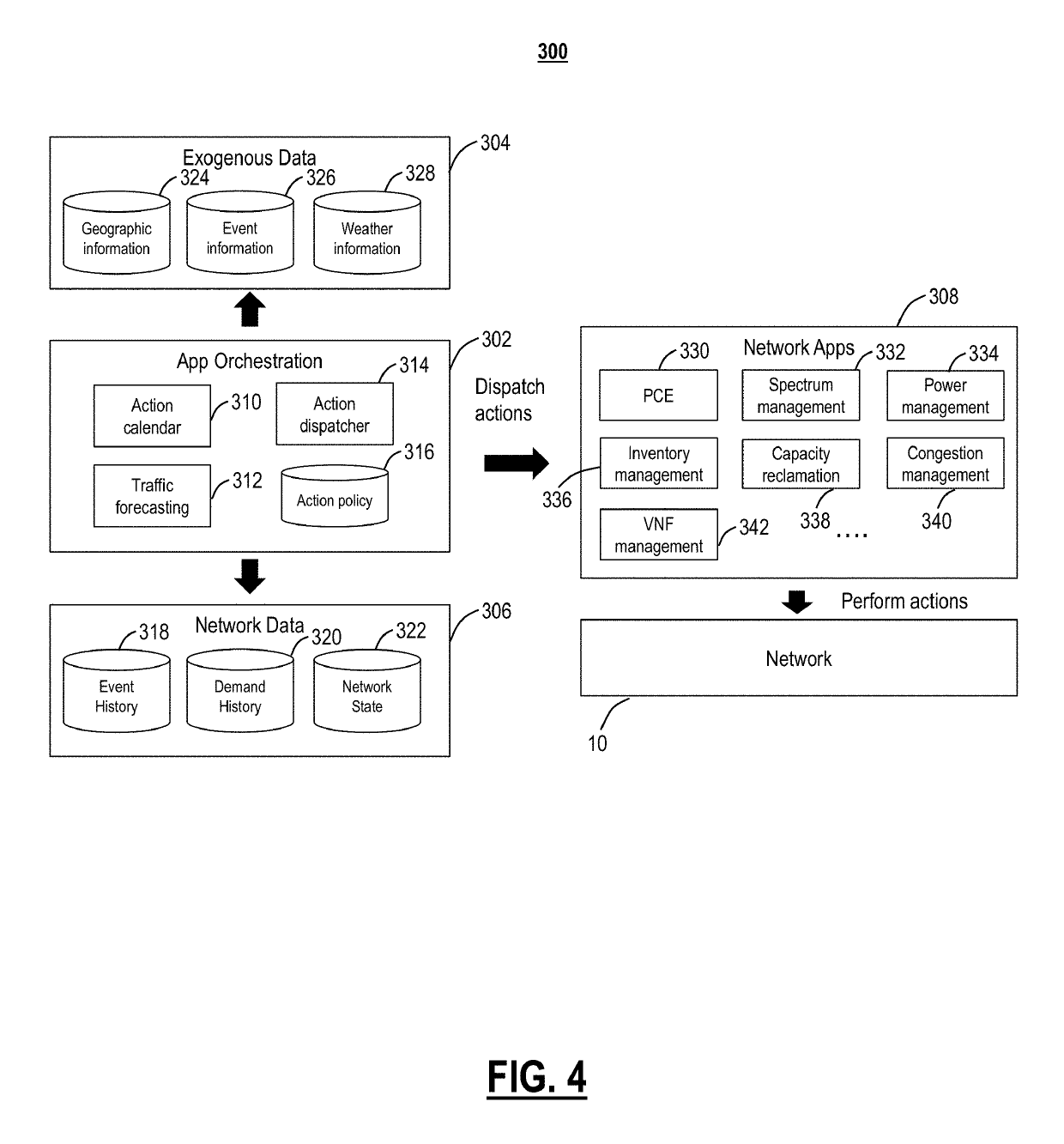Traffic-adaptive network control systems and methods
a network control and traffic-adaptive technology, applied in the field of network control systems and methods, can solve the problems of poor network utilization (higher cost), unsatisfactory user experience, and unclear when to run, so as to achieve efficient resource utilization, minimize costs, and reduce costs
- Summary
- Abstract
- Description
- Claims
- Application Information
AI Technical Summary
Benefits of technology
Problems solved by technology
Method used
Image
Examples
Embodiment Construction
[0022]In various exemplary embodiments, the present disclosure relates to traffic-adaptive network control systems and methods. The systems and methods include monitoring the traffic demand (e.g., packet volumes, connection setup and release requests) offered to the network and maintaining representations or models of traffic demand using one or more statistical or machine learning models. The traffic demand models are used to create a traffic forecast that includes a set of possible traffic evolution trajectories with associated probabilities of occurrence. The systems and methods further include monitoring external events that can affect network traffic demand. The external events can include natural and man-made disasters, weather events, sporting or political events, changes in served population, and the like. The systems and methods include translating these external events into adjustments of the demand traffic models which can use a range of adaptive responses or actions (Net...
PUM
 Login to View More
Login to View More Abstract
Description
Claims
Application Information
 Login to View More
Login to View More - R&D
- Intellectual Property
- Life Sciences
- Materials
- Tech Scout
- Unparalleled Data Quality
- Higher Quality Content
- 60% Fewer Hallucinations
Browse by: Latest US Patents, China's latest patents, Technical Efficacy Thesaurus, Application Domain, Technology Topic, Popular Technical Reports.
© 2025 PatSnap. All rights reserved.Legal|Privacy policy|Modern Slavery Act Transparency Statement|Sitemap|About US| Contact US: help@patsnap.com



